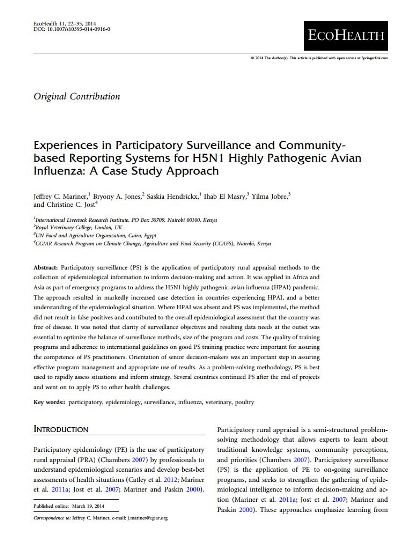Experiences in participatory surveillance and community-based reporting systems for H5N1 highly pathogenic avian influenza: A case study approach
Abstract
Participatory surveillance (PS) is the application of participatory rural appraisal methods to the collection of epidemiological information to inform decision-making and action. It was applied in Africa and Asia as part of emergency programs to address the H5N1 highly pathogenic avian influenza (HPAI) pandemic. The approach resulted in markedly increased case detection in countries experiencing HPAI, and a better understanding of the epidemiological situation. Where HPAI was absent and PS was implemented, the method did not result in false positives and contributed to the overall epidemiological assessment that the country was free of disease. It was noted that clarity of surveillance objectives and resulting data needs at the outset was essential to optimize the balance of surveillance methods, size of the program and costs. The quality of training programs and adherence to international guidelines on good PS training practice were important for assuring the competence of PS practitioners. Orientation of senior decision-makers was an important step in assuring effective program management and appropriate use of results. As a problem-solving methodology, PS is best used to rapidly assess situations and inform strategy. Several countries continued PS after the end of projects and went on to apply PS to other health challenges.

